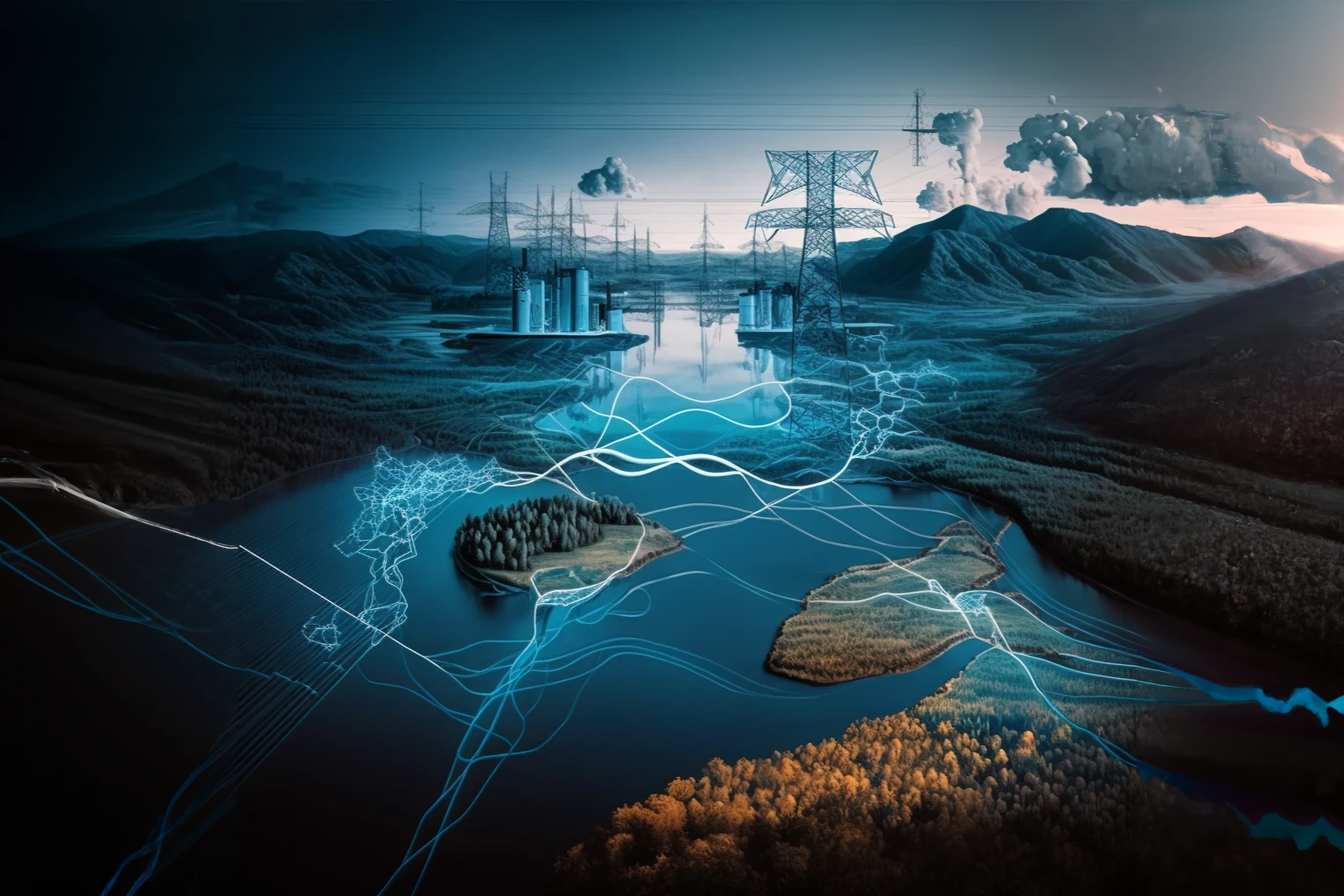
Share this Post
The world is undergoing a transition towards renewable energy sources to combat climate change. One of the main challenges in this transition is that most renewable energy sources, such as wind and solar, are intermittent, and their energy output varies depending on weather conditions. To address this hurdle, innovative technologies are needed that can store renewable energy and increase demand flexibility and supply balancing, ensuring there is energy at all times. This is where Power to X comes in.
Power to X (PtX) refers to a set of technologies that convert renewable electricity into a different form of energy carrier such as hydrogen, synthetic fuels, or heat. For example, to create synthetic fuels, PtX technologies use green power to split water into hydrogen and oxygen by electrolysis. The hydrogen is combined with carbon dioxide or other compounds to create synthetic liquid or gas fuels, which can then be stored in tanks for use in a range of domestic and industrial energy end-users. The “X” destination in PtX can also refer to heat.
The ability of PtX technologies to convert green electricity from the power sector to heat, gas, or liquid fuel for use and storage, holds promise for the decarbonization of emission intensive industries that at present are dependent on fossil fuels (e.g. heavy industry; aviation, shipping and other heavy-duty transport, heating) and difficult to electrify sectors.
PtX and sector coupling: The Future is Electric
Sector coupling, i.e. the broadening integration of power supply sectors with energy-using sectors, is effectively made possible by PtX, since it is PtX that facilitates transfer of electrical energy to diverse alternatives.
The scalability of PtX and sector coupling relies on an increase in electricity generation. Data on this expansion is encouraging: global electricity generation is expected to grow 3.3% per year to 2050, and annual capacity additions of all renewables is expected to quadruple to approximately 1,200 GW in 2030 with 60% of total generation being green, according to the International Energy Agency’s roadmap for Net Zero Emissions by 2050. According to this same source, by 2050, nearly 90% of electricity will come from renewable sources, with an estimated 3,670 GW of electrolyzers deployed worldwide to produce green hydrogen.
PtX where “X” is green fuels
The first step in the PtX fuel conversion process is extracting hydrogen from water through electrolysis using electricity derived from a renewable source such as wind or solar. The green hydrogen can then be used directly as a green fuel, for example for road transport or industrial processes, or it can form the base in a refining process, where hydrogen is further processed to produce new PtX fuels, or e-fuels.
Using nitrogen freely available from the ambient air (NH3), green hydrogen can also be converted to green ammonia, or e-ammonia, interchangeable with fossil hydrogen-based ammonia without significant changes in infrastructure. Production of traditional ammonia is the biggest consumer of fossil hydrogen in the world, and has a CO2 footprint equivalent to the total emissions of South Africa’s energy system. Substituting it with e-ammonia as a key component of fertilizers will therefore contribute significantly to decarbonizing the agricultural sector.
Longer term, it will also be possible to use e-ammonia in the maritime sector as an emission-free fuel, but this will require an adaptation of the current fleet.
Fuel can also be synthesized from hydrogen using carbon. By adding carbon to the green hydrogen in a synthesis process, e-methane, e-diesel, e-kerosene, e-dimethyl ether and e-methane can be produced. These e-fuels can be used for heavy transport, ships, airplanes, and for heavy industry.
Using carbon requires Carbon Capture and Utilisation (CCU) technologies in which CO2 is captured, for example from biogas plants or collected from cogeneration plants, incinerators or from industry.
In the International Energy Agency’s Net Zero Scenario, electricity will provide more than half of final total consumption by 2050 with hydrogen and other PtX fuels to be deployed in heavy industry and long-distance transport, with their share of total final consumption reaching 10% in 2050. Nordic Clean Energy Scenarios points out that transporting PtX fuels may be less costly per kWh than transporting electricity, especially over long distances.
PtX and sector coupling: Denmark’s pioneering vision
Denmark has significant wind resources. The share of renewable electricity in Danish electricity consumption is currently above 50% and predicted to continue rising significantly in coming years. Regarding economic sustainability, energinet.dk, the Danish national grid operator, is hopeful that production of new high-value PtX products such as jet fuel from surplus wind energy will increase the chances of continued high investor interest in offshore wind farms.
In Danish waters alone, offshore wind farms can be established to produce approximately three times more electricity as the volume needed to be a fully electrified society. Some of this electricity can be converted into green hydrogen or gas and stored in the gas system, thereby solving the challenge of storing enough energy from fluctuating wind and solar energy sources.
Furthermore, excess electricity can be used for converting renewable electricity into gas, green hydrogen and PtX fuels.
The Danish Energy Agency assesses that PtX will be an essential part of the Danish’ government’s target to reduce emissions by 70% by 2030, and particularly in relation to reach climate neutrality by 2050.
Geologically, Denmark has underground caverns that today stores natural gas and that can be converted into hydrogen storage areas. Geographically, it is also well placed to create and play an active role in the Northern European hydrogen infrastructure network.
In 2030, Denmark aims for domestic flights to be 100% renewable and has pledged more than DKK 3bn to support production of PtX fuels. Furthermore, Denmark plans to build the world’s first energy island in the North Sea, with a 3GW capacity of offshore wind production but will also contain technologies to turn the renewable electricity into green fuels for ships, planes and trucks.
Challenges to the Promotion of PtX
While PtX technologies offer a promising way forward to decarbonize sectors that are difficult to electrify, several obstacles need to be addressed to promote their widespread adoption. One significant challenge is the high cost of PtX production compared to traditional fossil fuels. PtX technologies require substantial investments in infrastructure and equipment, making them economically unfeasible without government support or policy incentives.
Another challenge is the energy efficiency of PtX technologies. The conversion of renewable electricity to PtX fuels involves multiple steps, each of which incurs energy losses, reducing the overall efficiency of the process. Improving the efficiency of PtX technologies is essential to make them more competitive and economically viable.
The production of PtX fuels also raises concerns about their environmental impact. The production of synthetic fuels using carbon capture technologies requires a significant amount of water and releases CO2 emissions from the tailpipe of the vehicle when the fuel is burned. Additionally, the production of PtX fuels may compete with food production, land use, and water resources, leading to socio-environmental conflicts that need to be addressed.
Finally, the lack of standardization and certification for PtX fuels presents a significant challenge to their commercialization. For example, end-users will be wary of their sustainability and compatibility with existing infrastructure. Therefore, developing a regulatory framework and certification standards for PtX fuels is crucial to promote their market acceptance and widespread adoption.
The way forward for PtX
In order for Power to X (PtX) technologies to achieve their potential in decarbonizing human activity on the planet, many obstacles remain. Overcoming them will require a concerted effort from policymakers, industry stakeholders, and academia to develop and implement policies and strategies that incentivize the production and use of PtX fuels while ensuring their economic viability and sustainability. With a concerted effort involving this broad range of actors, PtX technologies will play a key role in accelerating the transition towards a carbon-neutral future to combat climate change.
Further reading:
Megavind tackles the challenges of stability and variability of Denmark’s energy transition.
The opinions expressed in this text are solely that of the author/s and do not necessarily reflect the views of the Israel Public Policy Institute (IPPI) and/or its partners.
Share this Post

What is Open Government Data?
What is open government data? Open Government Data (OGD) is not just about openness and transparency, nor is…

"We need to "vaccinate" people against misinformation so that they can identify suspicious information on their own"
Disinfo Talks is an interview series with experts that tackle the challenge of disinformation through different prisms. Our talks…

Who Will Watch the Watchmen? Oversight of Online Surveillance in Israel
Among the initial Israeli responses to the COVID-19 pandemic was the harnessing of counterterrorism surveillance measures used by the…
